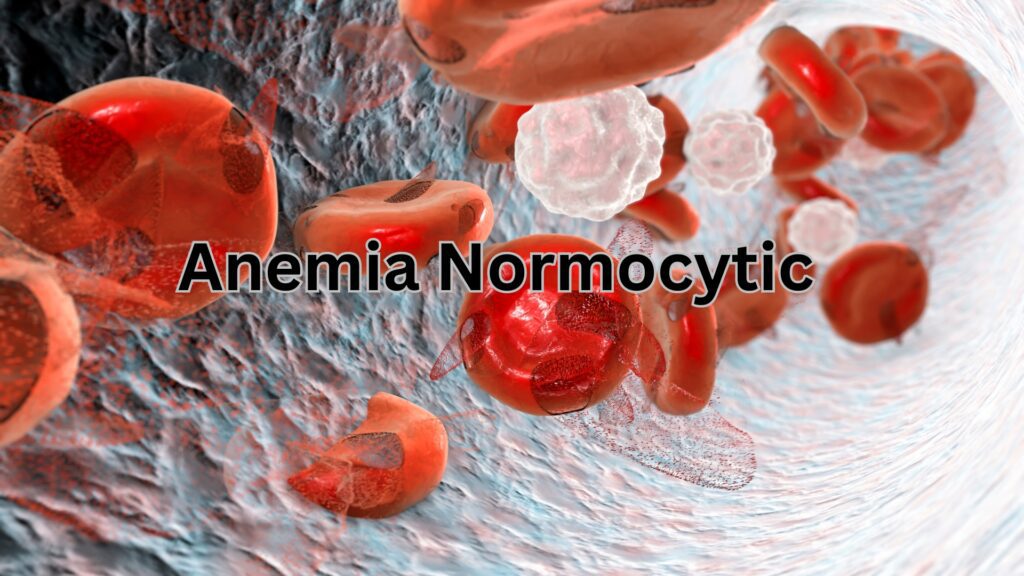Anemia normocytic, a condition characterized by normal-sized red blood cells but insufficient quantities, is a significant health concern affecting millions worldwide. In this comprehensive guide, we delve into the intricacies of normocytic anemia, including its causes, symptoms, diagnosis, treatment options, preventive measures, and tips for managing the condition effectively.
Table of Contents
Introduction to Anemia Normocytic
Normocytic anemia refers to a condition where the size of red blood cells (RBCs) is within the normal range, but their quantity is inadequate to meet the body’s oxygen requirements. This can result from various underlying factors, including genetic predispositions, chronic diseases, and bone marrow disorders.
Causes of Anemia Normocytic
Genetic Factors
Certain genetic conditions, such as sickle cell anemia and thalassemia, can predispose individuals to Anemia Normocytic. These inherited disorders affect the production and lifespan of red blood cells, leading to chronic anemia.
Chronic Diseases
Chronic illnesses like chronic kidney disease, autoimmune disorders, and infections can contribute to Anemia normocytic by interfering with the body’s ability to produce or utilize red blood cells effectively. Inflammatory conditions and hormonal imbalances may also play a role in the development of this type of anemia.
Bone Marrow Disorders
Disorders affecting the bone marrow, such as aplastic anemia and myelodysplastic syndromes, can disrupt the normal process of red blood cell production, leading to Anemia normocytic. Chemotherapy and radiation therapy used in cancer treatment can also damage the bone marrow and result in anemia.
Symptoms and Diagnosis
The symptoms of normocytic anemia may vary depending on its underlying cause and severity. Common signs include:
- Fatigue and weakness
- Paleness of the skin and mucous membranes
- Shortness of breath
- Dizziness and lightheadedness
Diagnosis typically involves a thorough medical history review, physical examination, and laboratory tests, including complete blood count (CBC), iron studies, and additional tests to identify any underlying conditions contributing to anemia.
Treatment Options for Anemia normocytic
The treatment approach for normocytic anemia aims to address underlying causes, alleviate symptoms, and improve overall quality of life. Treatment options may include:
- Addressing Underlying Causes: Treating underlying conditions such as chronic diseases or bone marrow disorders is essential in managing normocytic anemia.
- Medications: Depending on the underlying cause, through medical check-ups and screenings can help in treatment of conditions that may contribute to anemia, allowing for timely intervention and management.
Dietary and Lifestyle Recommendations
Adopting a balanced diet rich in iron, vitamins, and minerals is crucial for individuals with Anemia normocytic. Some dietary and lifestyle recommendations include:
- Iron-Rich Foods: Incorporating foods such as lean meats, poultry, fish, leafy green vegetables, and fortified cereals can help boost iron levels in the body.
- Vitamin Supplements: Supplements containing vitamins B12, folate, and vitamin C may be recommended to support red blood cell production and absorption of iron.
- Regular Exercise: Engaging in regular physical activity can improve circulation, increase energy levels, and alleviate symptoms of fatigue associated with Anemia normocytic.
Prevention Measures
While some causes of normocytic anemia may be unavoidable, there are steps individuals can take to reduce their risk or manage the condition effectively:
- Managing Chronic Diseases: Proper management of underlying chronic conditions such as diabetes, kidney disease, and autoimmune disorders can help prevent complications and minimize the risk of developing normocytic anemia.
- Regular Health Check-ups: Routine medical check-ups and screenings can aid in early detection and treatment of conditions that may contribute to anemia, allowing for timely intervention and management.
Living with Normocytic Anemia
Living with normocytic anemia can present challenges, but with the right support and management strategies, individuals can lead fulfilling lives. Some tips for coping include:
- Coping Strategies: Learning to manage fatigue, prioritizing tasks, and seeking support from healthcare professionals and support networks can help individuals cope with the challenges of living with normocytic anemia.
- Support Networks: Connecting with others who have similar experiences can provide valuable emotional support, practical advice, and encouragement on the journey of living with anemia.
Case Studies and Success Stories
Exploring real-life case studies and success stories of individuals managing normocytic anemia can provide insight, inspiration, and hope for others facing similar challenges. These stories highlight the resilience, perseverance, and determination of individuals living with anemia.
Conclusion
Normocytic anemia is a complex condition with diverse underlying causes and manifestations. By understanding its causes, symptoms, diagnosis, and treatment options, individuals can take proactive steps to manage the condition effectively and improve their quality of life. With ongoing research and advancements in medical science, there is hope for better outcomes and improved management strategies for those living with normocytic anemia.
You may also like to read about Anemia in Men.
Learn more about Normocytic Anemia
FAQs
1. Is normocytic anemia a life-threatening condition? Normocytic anemia can range from mild to severe, depending on its underlying cause and severity. While it may not always be life-threatening, severe cases of anemia can lead to complications if left untreated.
2. Can normocytic anemia be cured completely? The treatment and management of normocytic anemia focus on addressing underlying causes, managing symptoms, and improving quality of life. In some cases, anemia may be effectively managed or even resolved with appropriate medical interventions.
3. Can normocytic anemia be prevented? While some causes of normocytic anemia may not be preventable, such as genetic factors or certain chronic diseases, adopting a healthy lifestyle, maintaining a balanced diet, and managing underlying health conditions can help reduce the risk of developing anemia.
4. How is normocytic anemia diagnosed? Diagnosis of normocytic anemia typically involves a series of blood tests, including a complete blood count (CBC), iron studies, and additional tests to assess red blood cell morphology and function. A thorough medical history review and physical examination are also essential in identifying underlying causes.
5. What are the long-term complications of untreated normocytic anemia? Untreated normocytic anemia can lead to various complications, including fatigue, weakness, shortness of breath, dizziness, and an increased risk of cardiovascular problems. Severe or chronic anemia can also affect overall quality of life and may require ongoing medical management.
6. Can dietary changes alone improve normocytic anemia? While incorporating iron-rich foods and vitamin supplements into the diet can support red blood cell production and improve iron levels, dietary changes alone may not always be sufficient to manage normocytic anemia, especially if the underlying cause is complex or requires medical intervention.





